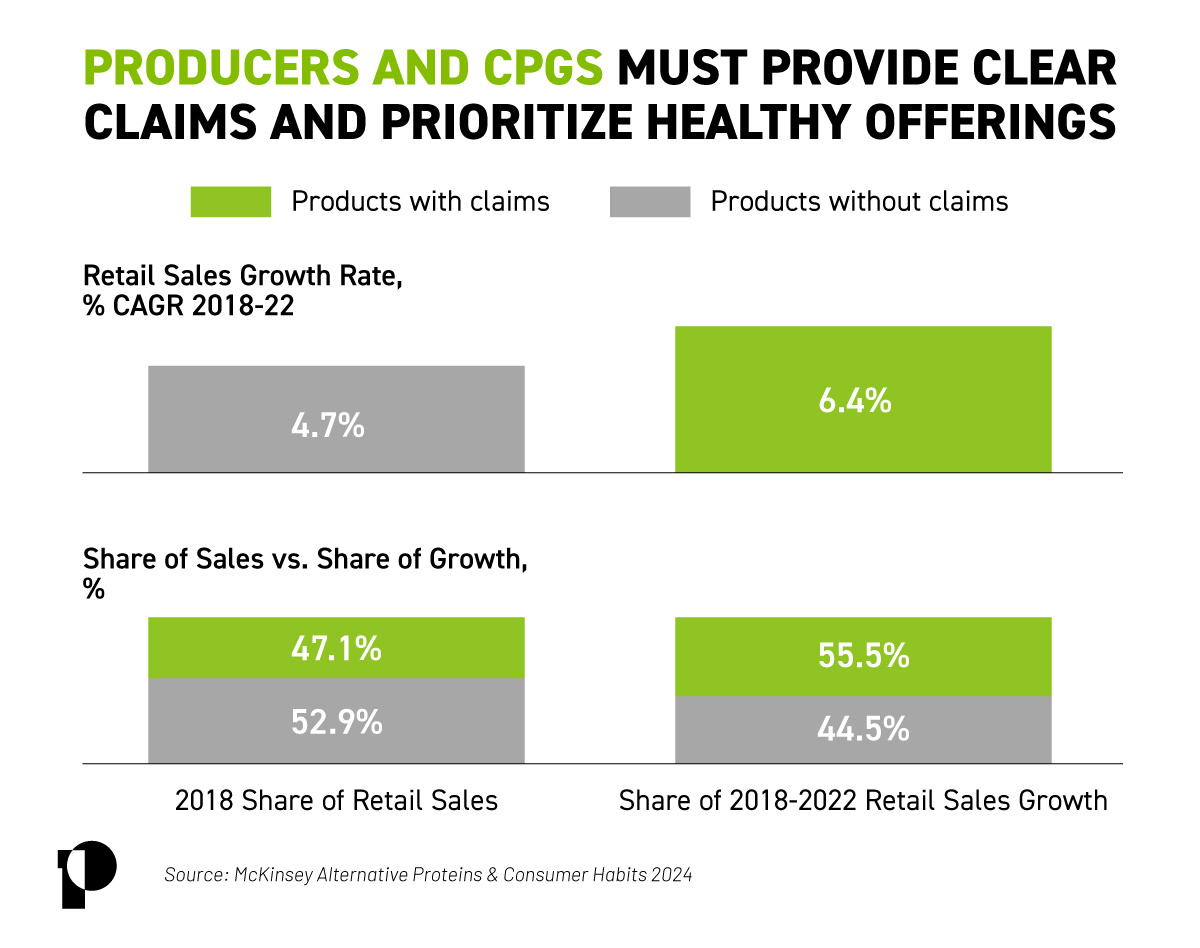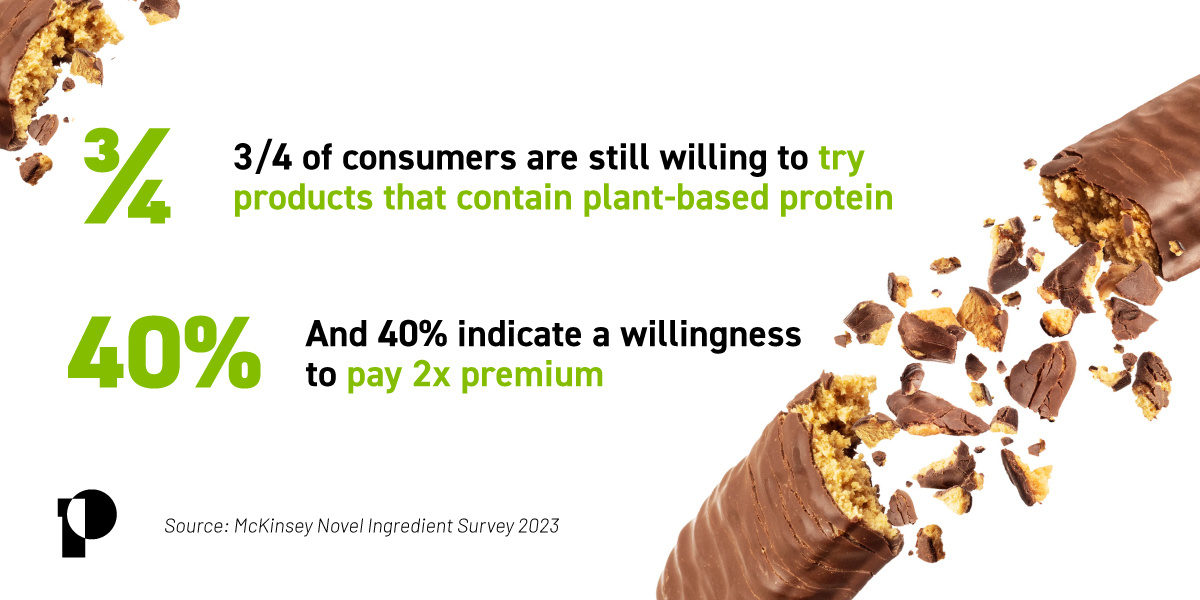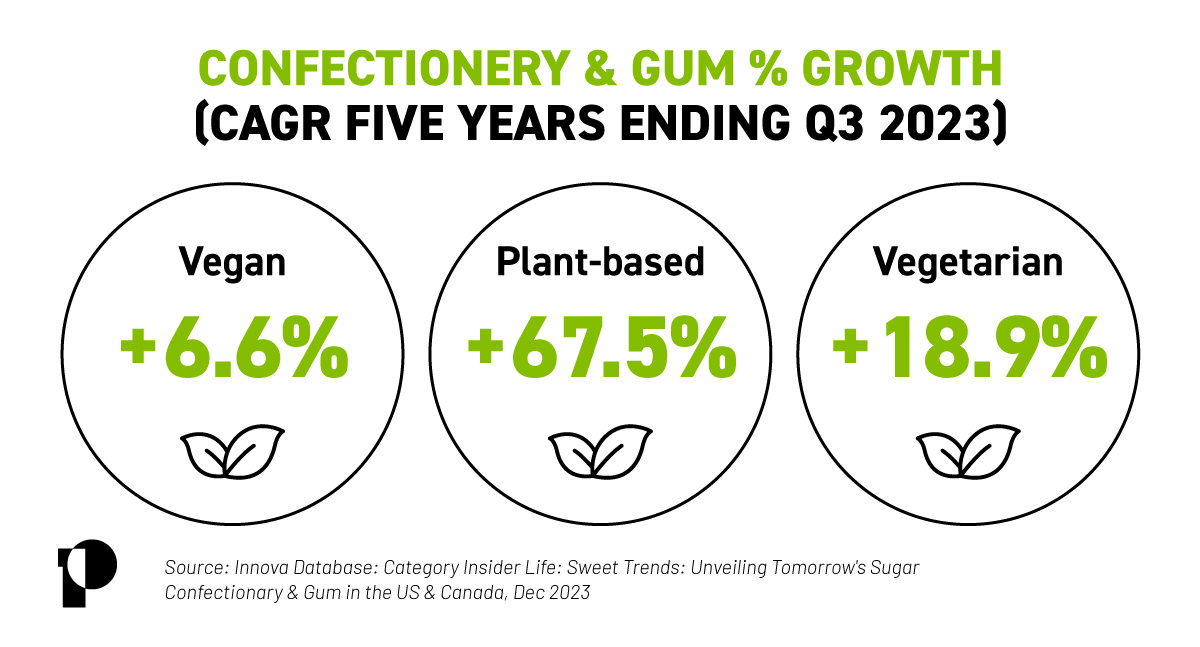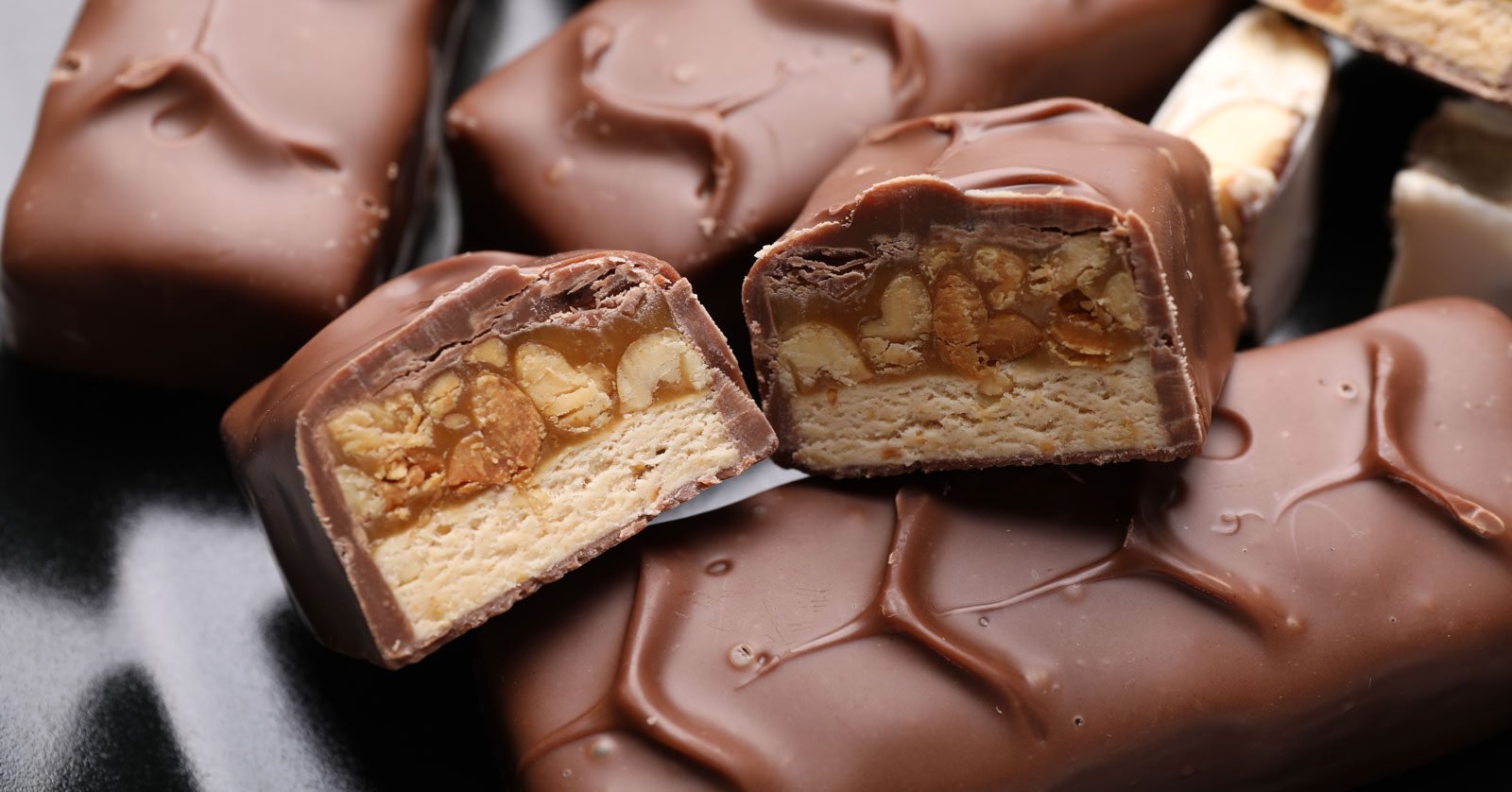The confectionery market is ripe for plant-based disruption, offering sweet opportunities for start-ups and established companies alike. It's also a diverse and dynamic space, encompassing everything from sugar candies and chocolates to candied fruits, nuts, chewing gum, and even ice cream.
Let's unwrap the potential of plant-based sweets and discover how you can be part of this tasty transformation.
Sweet Tooth, meet Good-For-You Trends
While consumers are looking to eat healthier, they struggle to find ways to do so. In a recent McKinsey survey, 75% of consumers reported wanting to be healthier,1 with 43% reporting reducing or stopping consumption of processed foods and 44% reducing or stopping consumption of sugar.
Still, that doesn't mean adults are giving up on confections. Nearly 2 in 3 U.S. adults eat sweets regularly. Of these sweets, 45% are sweet bakery products, and 31% are candy.
As we've observed consumer preferences shifting towards healthier, more sustainable options, we're seeing exciting trends emerge, including:
- Clean labels and natural ingredients: Consumers are increasingly scrutinizing ingredient lists, favoring products with recognizable, natural components (including plant-based claims).
- Functional and nutritious options: There's a growing demand for confections that offer more than just sweetness – think added protein, reduced sugar, or other nutritional benefits.
- Sustainable and ethical sourcing: Today's consumers care about the story behind their sweets, from farm to wrapper.
Producers and CPGs must make clear claims and prioritize healthy offerings to best capitalize on the shift towards healthier alternatives.

People are honing in on where they will splurge. According to a 2024 report from McKinsey, 39% of shoppers say that groceries and food for home are where they are most likely to treat themselves, second only to dining out.2 And with consumers looking for good-for-you snacks, now is the time to consider what claims you will add to your packaging.
The Role of Plant-Based Proteins in Confectionery
I recently attended what I'm affectionately calling "candy school" at the University of Wisconsin for a one-week deep-dive into hard candy and chocolate candy bars. This experience reinforced my (and PURIS's) belief that plant-based proteins have a crucial role in confectionery's future.

And it's not just us — we're seeing a lot of brands, both big and small, use plant-based ingredients in their gummies and chocolates, with plant-based snacks growing nearly 20% in dollar sales from 2022 to 2023.
At PURIS, we know this pivot in plant-based desserts isn't just about making health claims or touting sustainability (although those can be important). For many brands, it's as simple as providing a clean label with ingredients consumers recognize and trust. And it's a justified pivot, especially knowing that 74% of consumers are willing to try products that include pea protein.2
Applications in Confectionery Products
PURIS's plant-based offerings, particularly our pea proteins and upcycled pea starch, are versatile ingredients that can enhance a wide range of confectionery products:
- Chocolate and confectionery coatings: Our pea protein 870H is particularly effective in chocolate compound coatings. The protein interacts with cocoa butter and other fats to help create a smoother, creamier mouthfeel. Additionally, it can extend shelf-life by reducing moisture migration, a common issue in filled chocolates.
- Gummies and jellies: Our pea starch functions as an excellent gelatin replacer in gummies. The key advantage here is the formation of a cuttable gel texture that closely mimics traditional gelatin-based gummies. And with added 870H protein, you can create a cuttable texture that is also light and fluffy. And boasting a pure white foundation accompanied by a nearly tasteless flavor, pea starch won't interfere with the look and taste of your end product.
- Nougat and aerated confections: Our pea protein 870H truly shines for nougat applications. With its foaming capacity, P870H forms a stable network of partially denatured proteins around air bubbles during whipping, providing structural integrity to the foam. Moreover, P870H's foaming properties are relatively heat-stable, allowing for the incorporation of hot sugar syrups into the whipped protein base.
- Tapioca starch replacement: Whether you recently switched from GMO corn to tapioca or have been creating products with tapioca for a while, upcycled pea starch offers something new to manufacturers. With a smaller carbon footprint and the ability to show consumers something new by adding "pea starch" to your ingredient label, PURIS's upcycled pea starch can help frame your snacks as better-for-you options.

Emerging Opportunities
With plant proteins and starches still expanding into different confectionery products, there's a lot of untapped potential to bring something new to the market. Here are just a few areas we see potential for product disruption:
 Vegan marshmallows: With the growing demand for plant-based confections, our pea protein 870H is the perfect solution for creating fluffy, gelatin-free marshmallows. Its superior foaming properties and heat stability make it an ideal egg white replacer in these aerated confections.
Vegan marshmallows: With the growing demand for plant-based confections, our pea protein 870H is the perfect solution for creating fluffy, gelatin-free marshmallows. Its superior foaming properties and heat stability make it an ideal egg white replacer in these aerated confections.- Taffy: Our pea protein could potentially replace up to half of the egg whites typically used in taffy production, maintaining the characteristic chewy texture while offering cost savings and allergen reduction.
- Caramel sauces: Our pea starch shows promise in replacing sugar in caramel sauces.
- Jelly beans: Our pea starch is the secret ingredient for next-generation jelly beans. It creates the perfect chewy center and helps form a stable shell, all while keeping labels clean and appealing to health-conscious consumers.
- Protein-enhanced chocolate bars: By incorporating our pea protein into chocolate formulations, manufacturers can create high-protein chocolate bars that don't compromise on taste or texture. Our P870H integrates seamlessly, boosting nutritional value without the grittiness often associated with protein-enriched chocolates.
With so many different SKUs in our arsenal, PURIS has the ingredients (and the experts) to help you troubleshoot issues you may run into when working on a new recipe that includes pea products.
Lean into consumer preferences
We're past the days of wondering whether consumers will be interested in plant-based options, with 44% of global consumers expecting to consume more plant-based products. This same study found that 60% of global consumers aged 18–44 think every brand should have a plant-based offering.3
Today, "clean label" and "free from" are the most commonly sought out claims (after kosher and ethical packaging) in North America. And 24% of new sweet baked goods launches had protein claims.4
The global demand for vegan desserts is also on the rise. The vegan desserts category grew at a CAGR of 8.4% between 2016 and 2022, and it's expected to expand at a CAGR of 8.5% between 2023 and 2033
Top 10 Sugar Confectionery Flavors
The industry is turning a corner, where indulgence also can come with a "good for you" bonus. With this in mind, studies are finding that flavors including vanilla, nuts, and fruit rose between 2018 and 2022, likely because these flavors can be interpreted as being healthier than other options.5
As it stands today, sales are showing that consumers are most interested in the following flavors:
- Strawberry
- Cherry
- Fruit
- Orange
- Lemon
- Green apple
- Red grape
- Watermelon
- Blue raspberry
- Red raspberry
SWEETEN YOUR LINEUP WIth PURIS
The confectionery market is evolving, and plant-based ingredients are at the forefront of this change. Whether you're looking to create better-for-you candy or vegan alternatives or clean up your labels, PURIS is more than just a supplier—we're your partner in innovation.
While we can't name names, we've had clients who have scaled successfully with our ingredients, creating innovative products that stand out in the market.
Are you ready to explore the sweet possibilities of plant-based ingredients in your confectionery products? Check out the ingredients that can make it possible!
Sources:
1. McKinsey Global Future of Food Survey 2022
2. McKinsey ConsumerWise Global Sentiment Data, August 2024
3. McKinsey Novel Ingredient Survey 2023,
4. Barry Callebaut proprietary consumer survey, fielded digitally in November 2021 using Qualtrics.
5. Innova Database: Category Insider Life: Exploring Emerging Trends in Cookies & Sweet Baked Goods in the US & Canada






